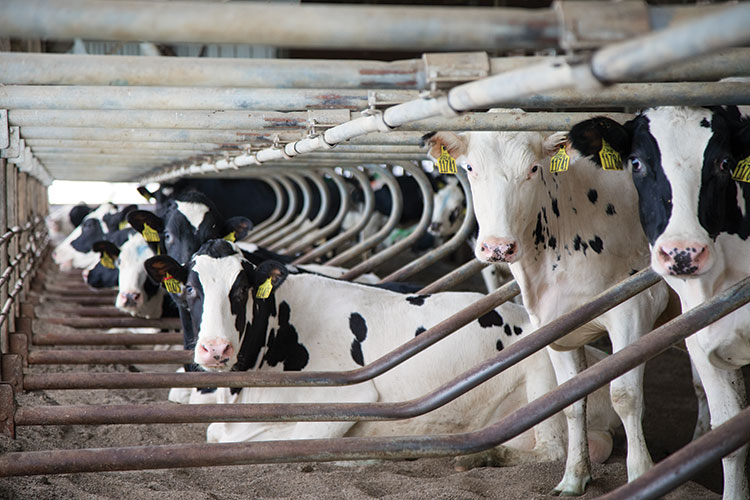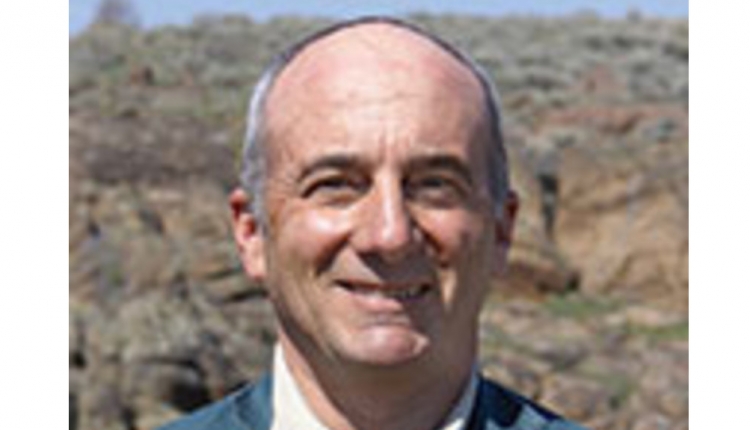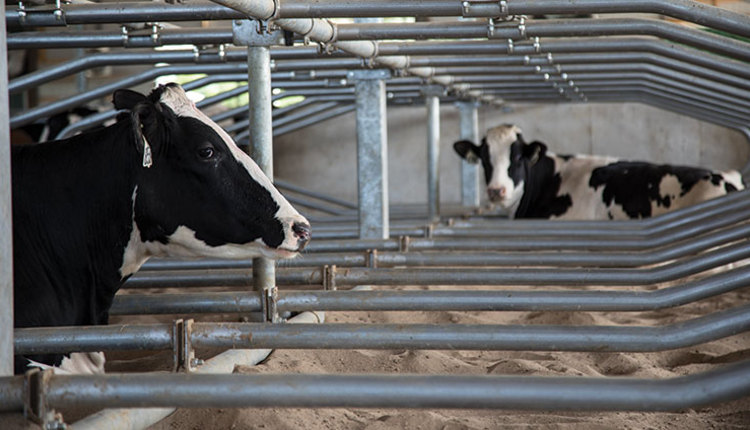The author is a large-herd veterinarian based in Jerome, Idaho.

Overcrowding has become a negative buzzword in the dairy industry. To admit that you intentionally overcrowd is like admitting you cheat on your taxes. It is widespread and sometimes unavoidable, yet generally agreed to be harmful in its effects. Often times, though, it is intentional or at least recognized, rationalized, and ignored.
Ask a dairyman to define “overcrowded,” and he’ll likely answer that it is “too many cows in a space designed for fewer.” This definition is deceptively simple and, I believe, insufficient.
It is generally agreed that a freestall pen of cows should have adequate feedbunk or manger space (one lockup or sufficient rail), generous water trough access, and a bed for each cow. But concrete, a roof, and lockups are expensive and, therefore, bankers encourage that you make maximum use of your facilities.
“Publish or perish” is an uncomfortable reality in academia; it is “produce or perish” on the dairy farm. That means that the average dairy that is attempting to be profitable will have at least one cow for every bed, feed space, or water space.
Overstocking at least some part of the operation has thus been the case on just about every dairy where I’ve practiced. There is much current research looking at how much a dairyman can “fudge” or overcrowd and get away with it. This appears to depend on parity, stage of lactation, and even breed.
Most times, this is a willful, conscious, and deliberate decision to overstock made by the dairyman. However, I’ve observed that there also exist unconscious and, to be mildly sarcastic, “creative” ways in which dairymen unintentionally overcrowd their cows.
Lost resting space
Open or “dry” lot dairies are in theory perhaps the most difficult to overcrowd. The typical “pen” is often a spacious square or rectangular corral that is defined by fences constructed of steel posts with festooned steel cables or solid rebar rods placed horizontally to act as rails. The “roof” overhead is the famous Western Big Sky, although often there are one or two rectangular metal shades held aloft by steel poles to provide shelter from the hot sun and infrequent heavy rain and snow.
One side of the pen, facing the feed alley, has a row of self-locking head gates or stanchions. Corner pens may have locks on two sides. There are no beds per se; in dry weather the cow “pats” are harrowed to encourage fragmentation and desiccation of the manure, creating in effect a large bedded pack.
Cows do not appear to mind bedding down in this material when it is dry. It is when it becomes “reconstituted” by rain, snow, and urine that trouble begins. Bacteria levels in the bedding can skyrocket, overwhelming teat end defenses and frequently causing environmental mastitis.
To help keep cows clean and dry, straw beds are laid down in wet weather. Like any other bedding material, straw beds must be managed. Cows like to rest in straw and the beds quickly become dirty and wet from use. Infrequent “pushing up” or removal of soiled bedding can eliminate any benefit that the straw was supposed to provide.
The soiled bedding is most frequently pushed to the center of the pen and piled. Without adding a cow, it is here that stealth overcrowding is created; by letting manure accumulate into a growing “mountain,” the cows are deprived of lying space it covers.
While I have observed intrepid cows scaling the sides of such man-made natural wonders, they rarely are able to comfortably rest there. I’ve observed these piles grow so large that cows are confined to a narrow lane that remains between the pile and the fence. This loss of lying space for the cows is often considerable.
Temporarily maintaining a manure pile in an open lot pen may be a minor “demerit” in the book of cow comfort. But on some dairies they are a perpetual, year-round feature. Letting “manure mountains” remain year-round, including during the dry months when they are easily removed, is inexcusable and a major infringement of the cow’s time budget.
Always in the way
Freestalls can have the correct cow/headlock/bed ratio and still be “creatively” overcrowded. I once had a client who kept a trimming chute, long unused, smack in the middle of his close-up pen. It took up the space of several cows, interfered with pen cleaning, and formed a painful obstacle to get pushed against when chasing cows around the pen. It had been there so long that it was “off the radar” and no longer mentally recognized.
I also commonly observe freestalls with broken or missing partitions or loops, creating double-wide “duplex” stalls that allow a cow to take a bed parallel, rather than perpendicular, to the alley. While very comfortable, this cow is denying another cow a bed.
Another way to unintentionally overcrowd is through feed management. A cow in a lockup or at a feeding rail can only stretch its neck so far to reach feed. If the feed just in front of it has been eaten, the cow cannot reach the feed that has been pushed forward and to the side.
I am constantly witness to an empty bunk within reach of the cow and a nice pile of enticing TMR just out of reach. Someday, scientists will be able to insert the giraffe neck gene into the bovine genome, but until then, do your cows a favor and feed and push up frequently so that feed is within reach.
Beyond the beds and bunks
We can provide cows with all the beds and pen space in the world for resting, and it will come to nothing if the cow is not able to use the space. As just described, we can physically exclude the cow from usable space with piled manure and unused equipment. We can also deny it use of the beds with excessive and unnecessary activity in the pens.
In Idaho, we are proud of our cowboy heritage. And cattle dogs are often, and productively, used when working beef cattle. Yet, I often encounter dogs around dairy cattle as well. It is the rare dairy cow that appreciates being barked at or intimidated by any canine.
The very sight, sound, and smell of a dog instinctively gets a cow’s attention, puts it on alert, and gets the cow onto its feet. A cow on high alert is not chewing its cud and most certainly not lying down and making milk.
It is perhaps a conceptual stretch, and even seems absurd, but you can overcrowd your feed supply as well, leading to deleterious effects just as significant as overcrowding your cows. Due to a lack of suitable space to store this year’s new corn silage or haylage, I’ve seen it piled over the remains of last year’s pit or pile. The result is a layer-cake of silages in varying states of fermentation. When a vertical face is cut into such piles, the resulting feed is a smorgasbord of silages.
While potentially exciting to amateur archeologists, who would view the layers stretching back into the past with appreciation, they are a nutritionist’s and cow’s worst nightmare. Do your cows and nutritionist a favor and avoid overcrowding or “stacking” silages. Create enough storage area to isolate different years and cuttings of forages.
It’s often beneficial to look at problems from a different perspective or to have new eyes look at an old problem. Try to think outside the box on your dairy and see if you can find areas where you are unintentionally being creative about cow overcrowding.










